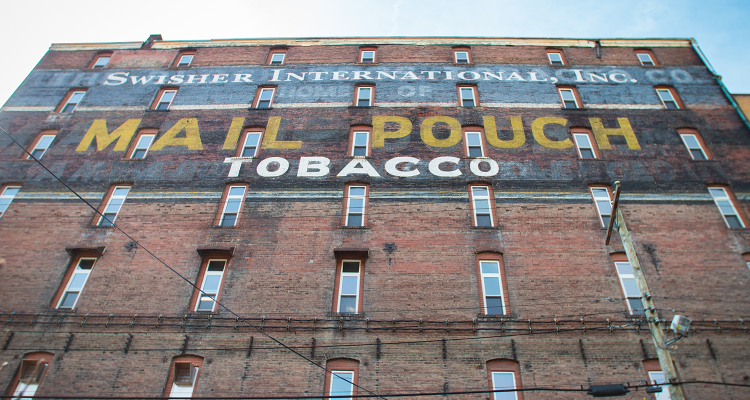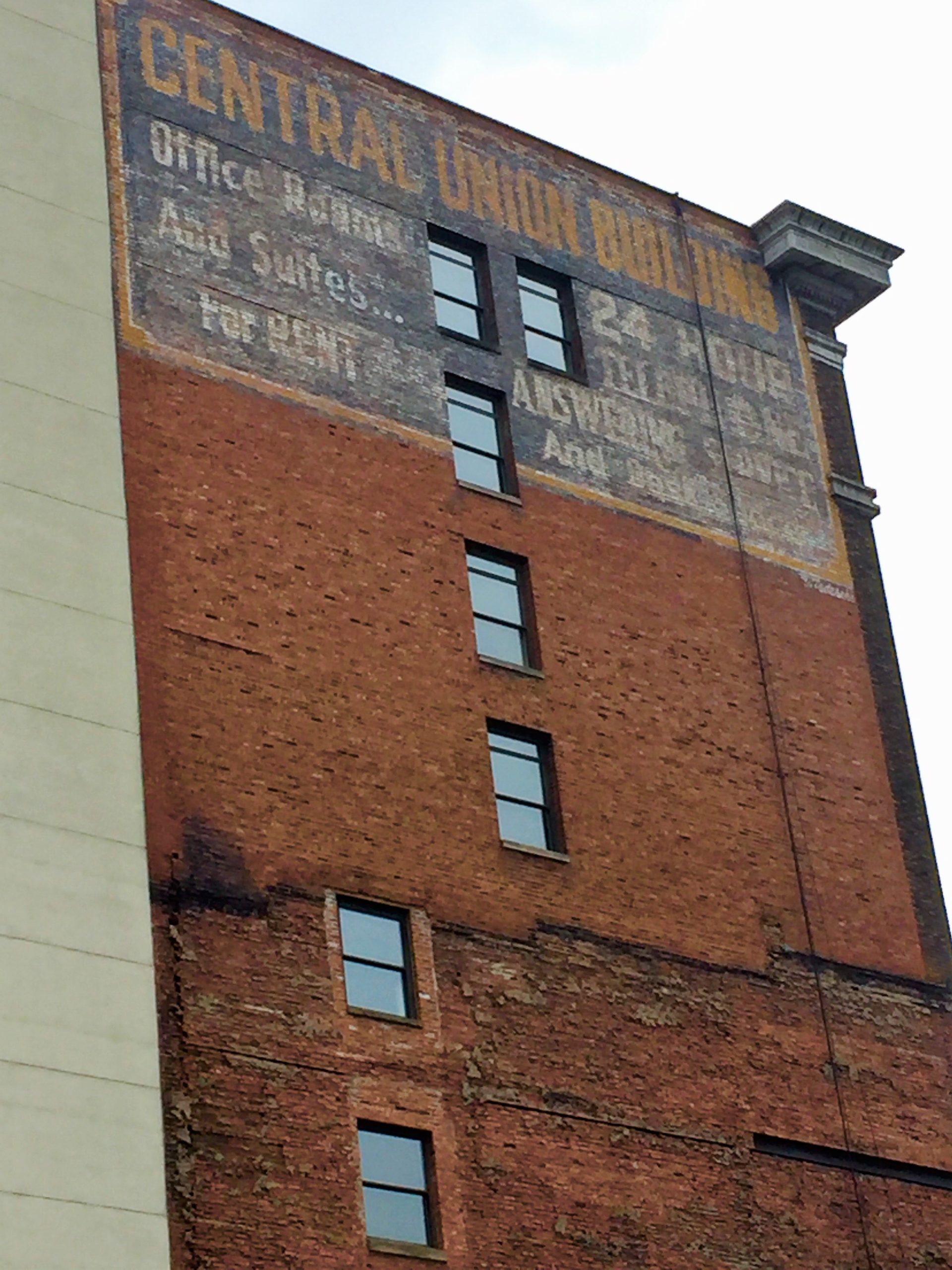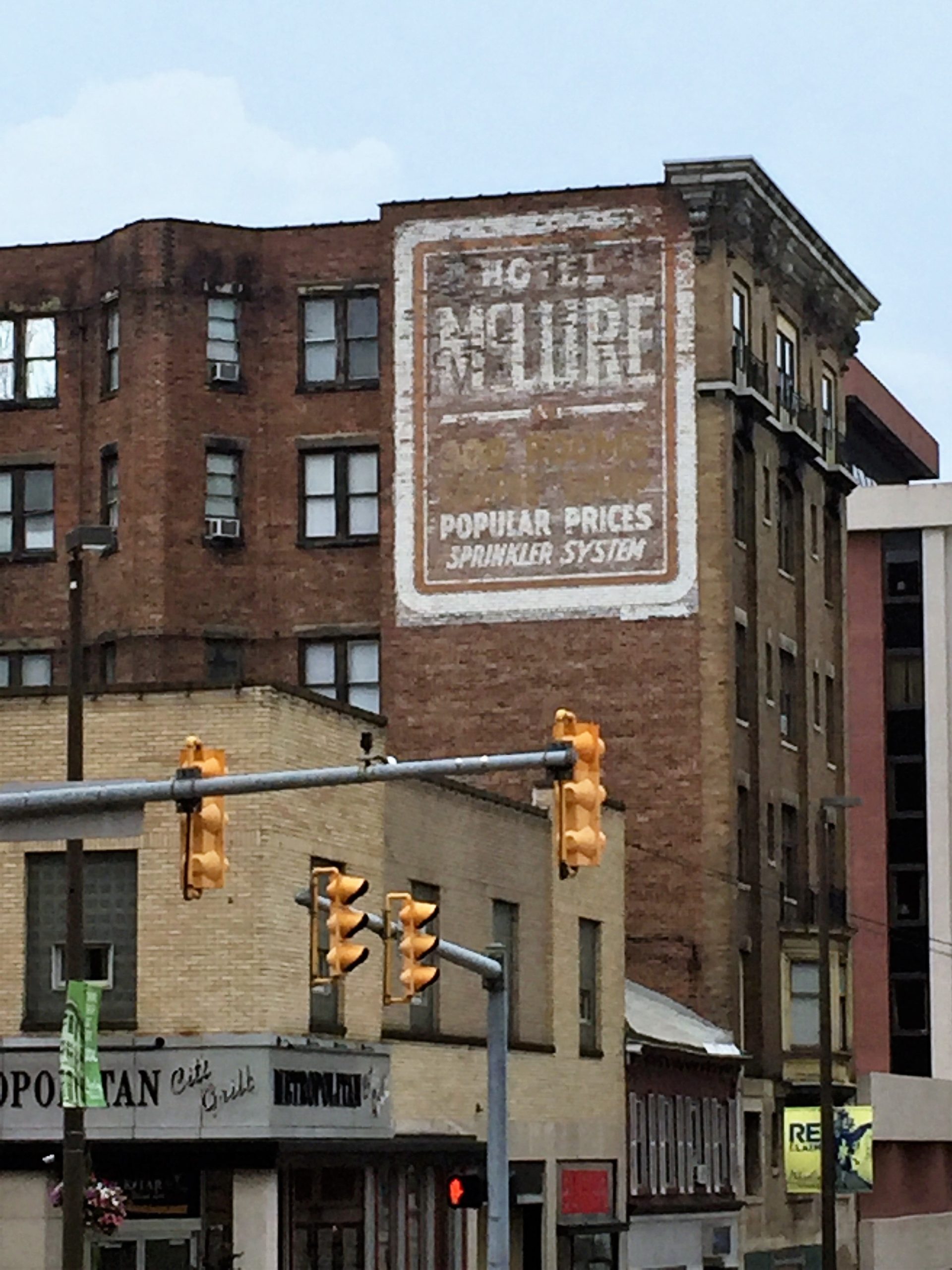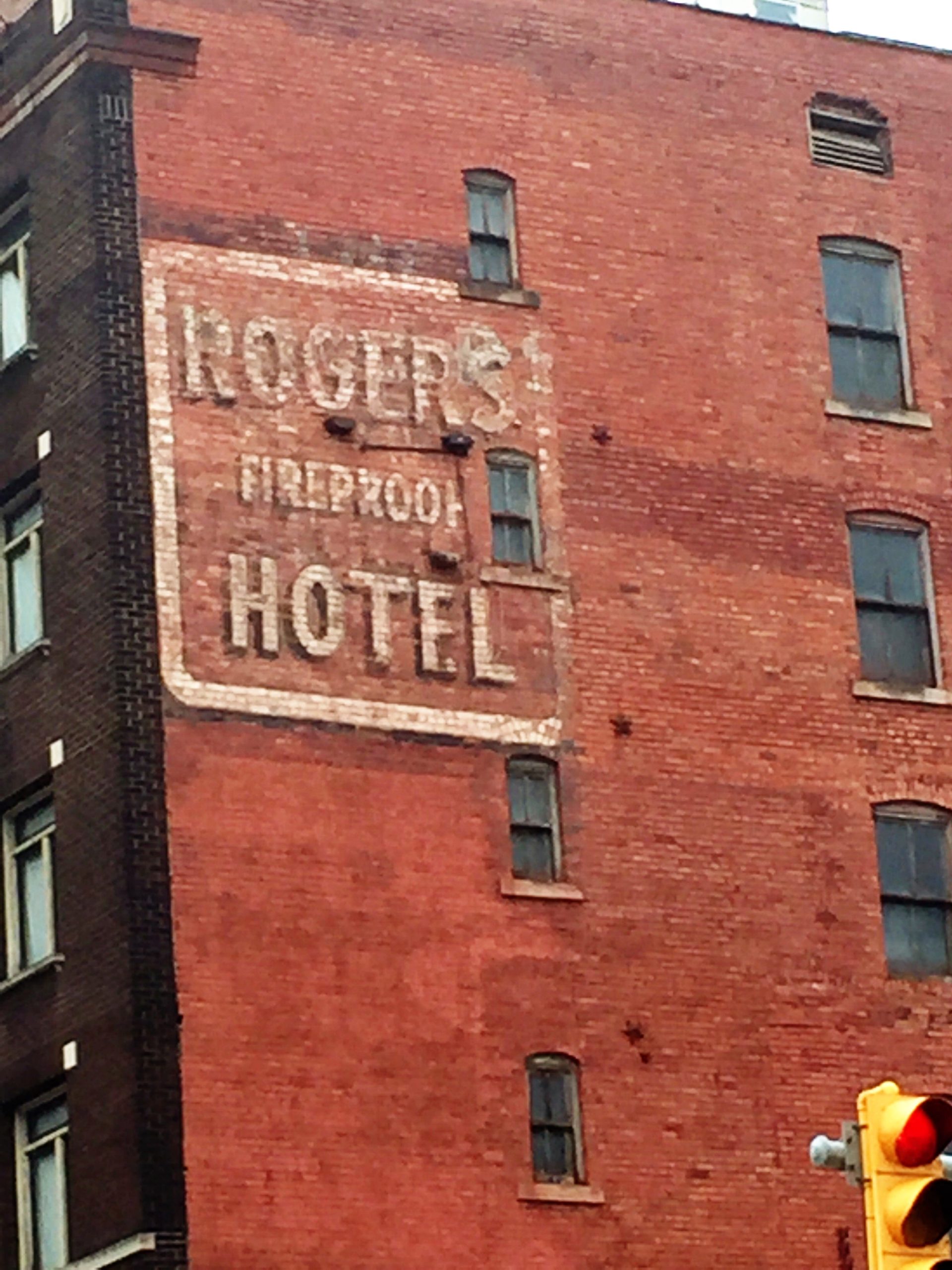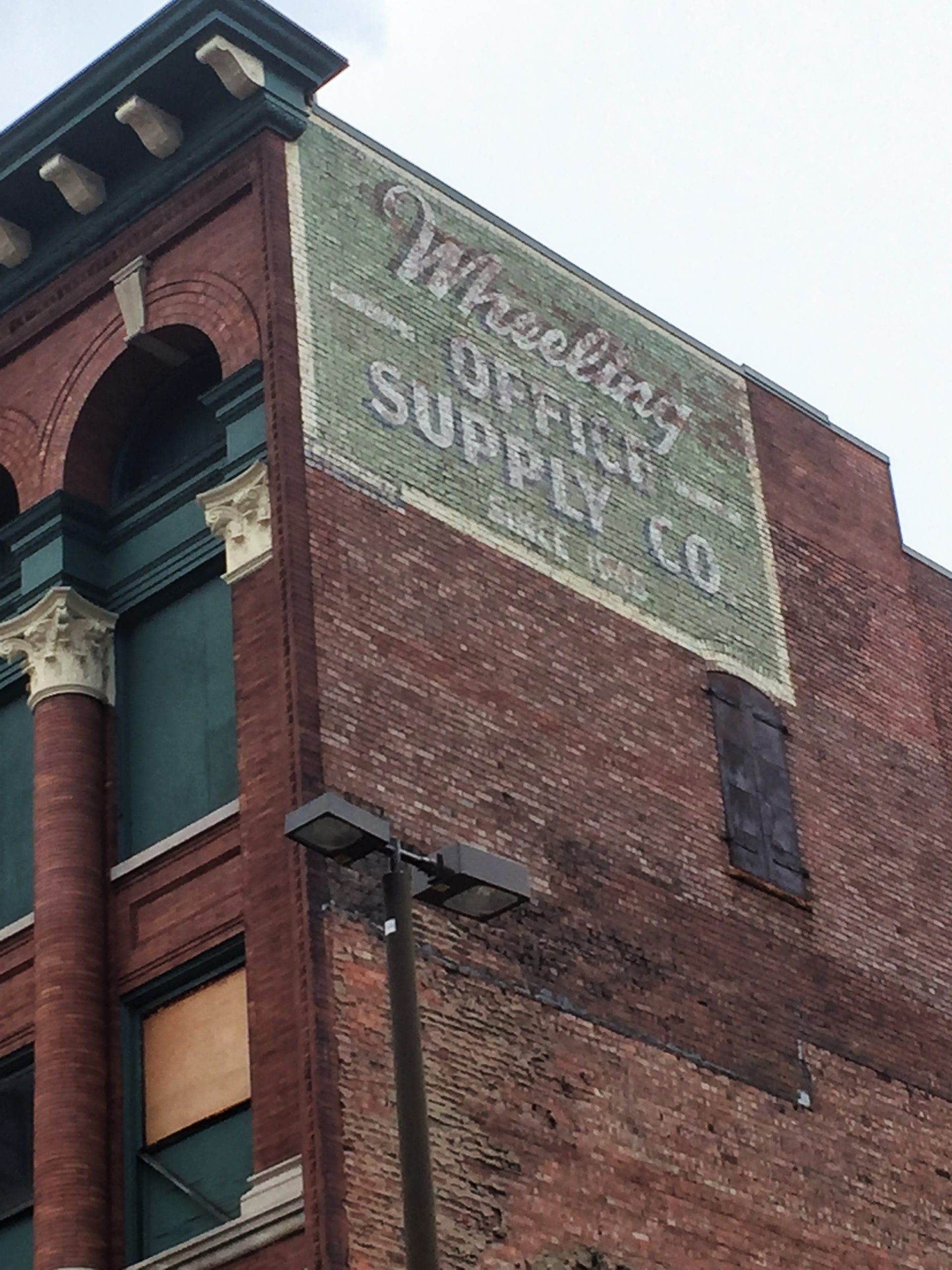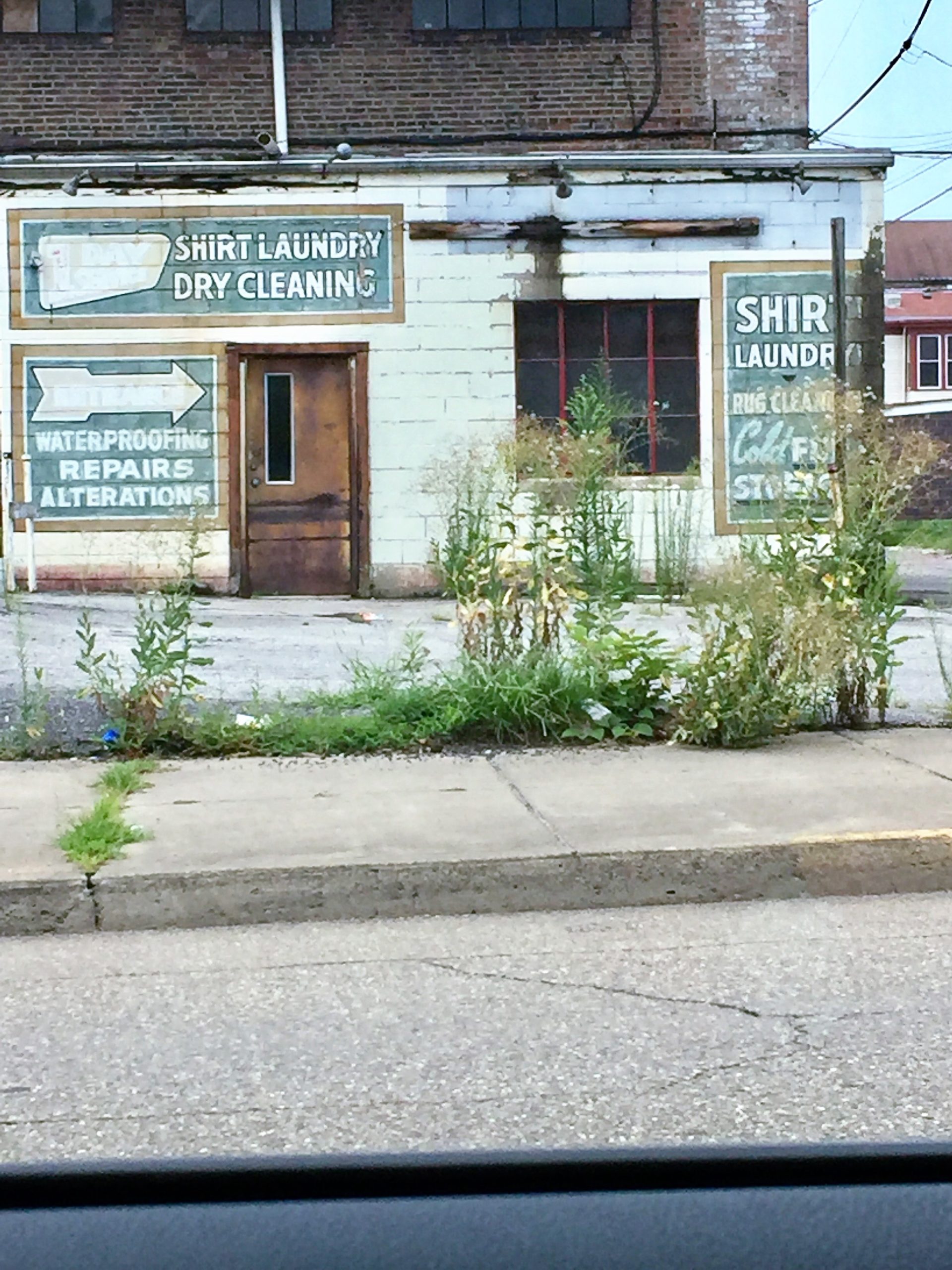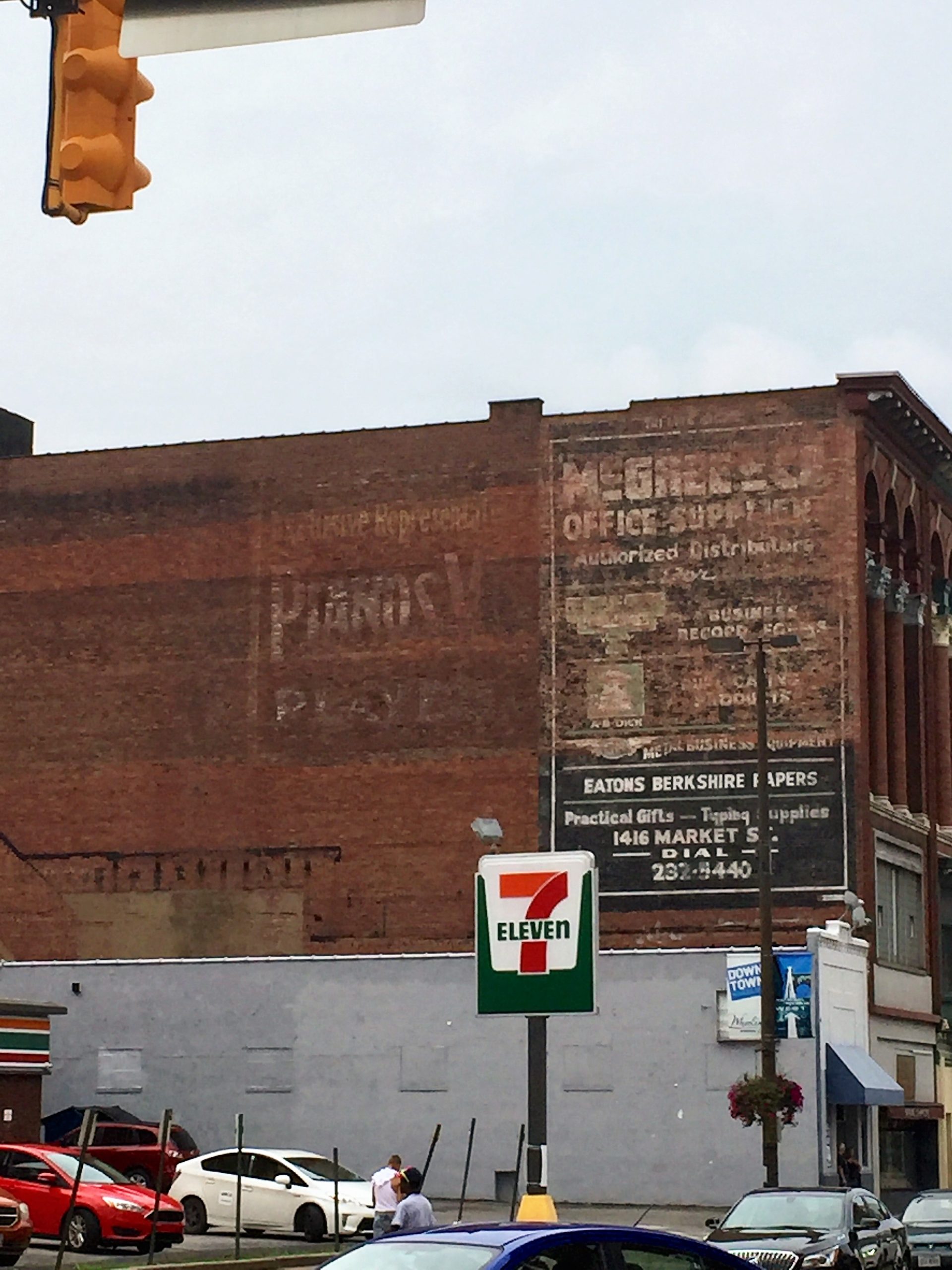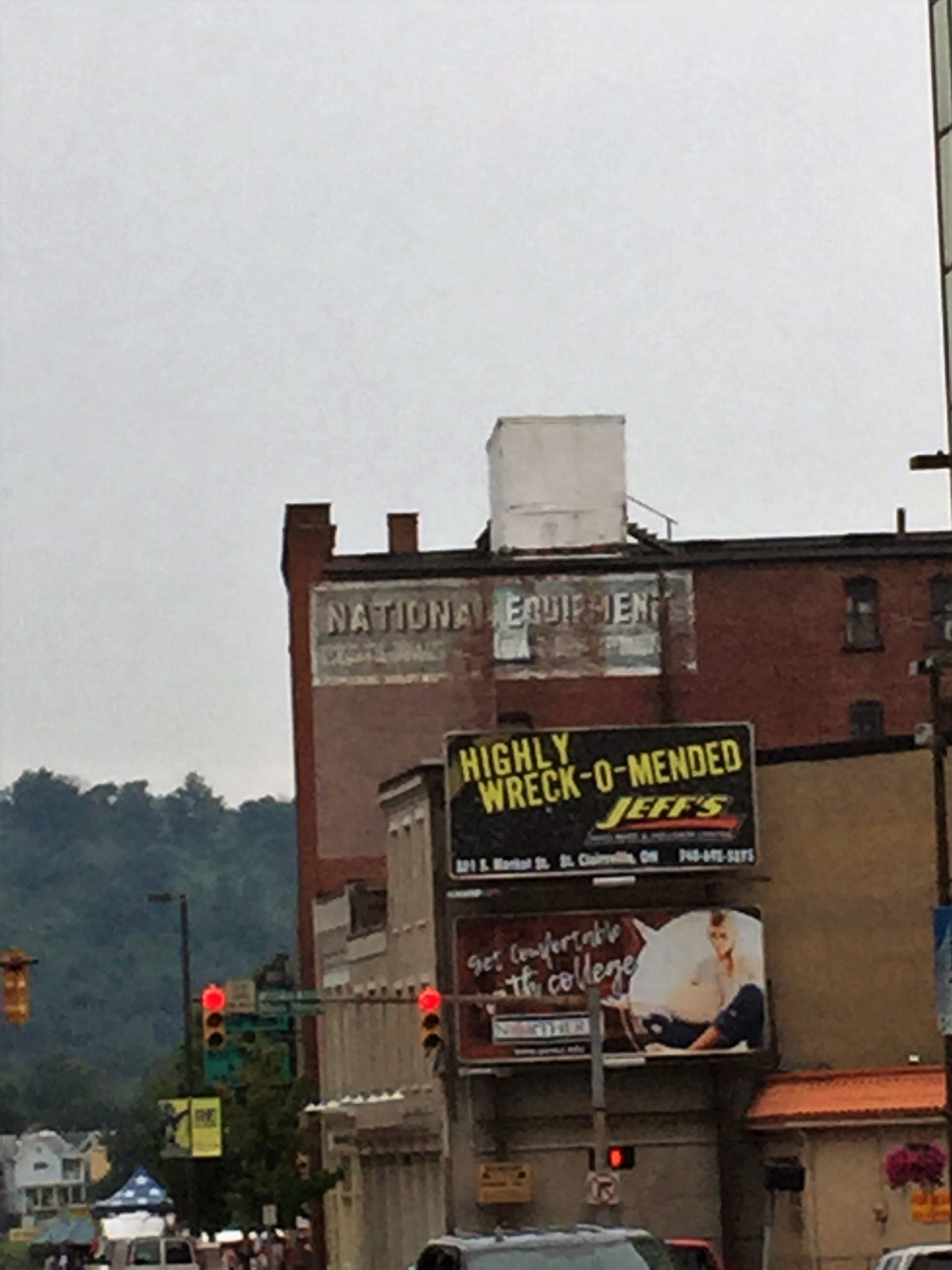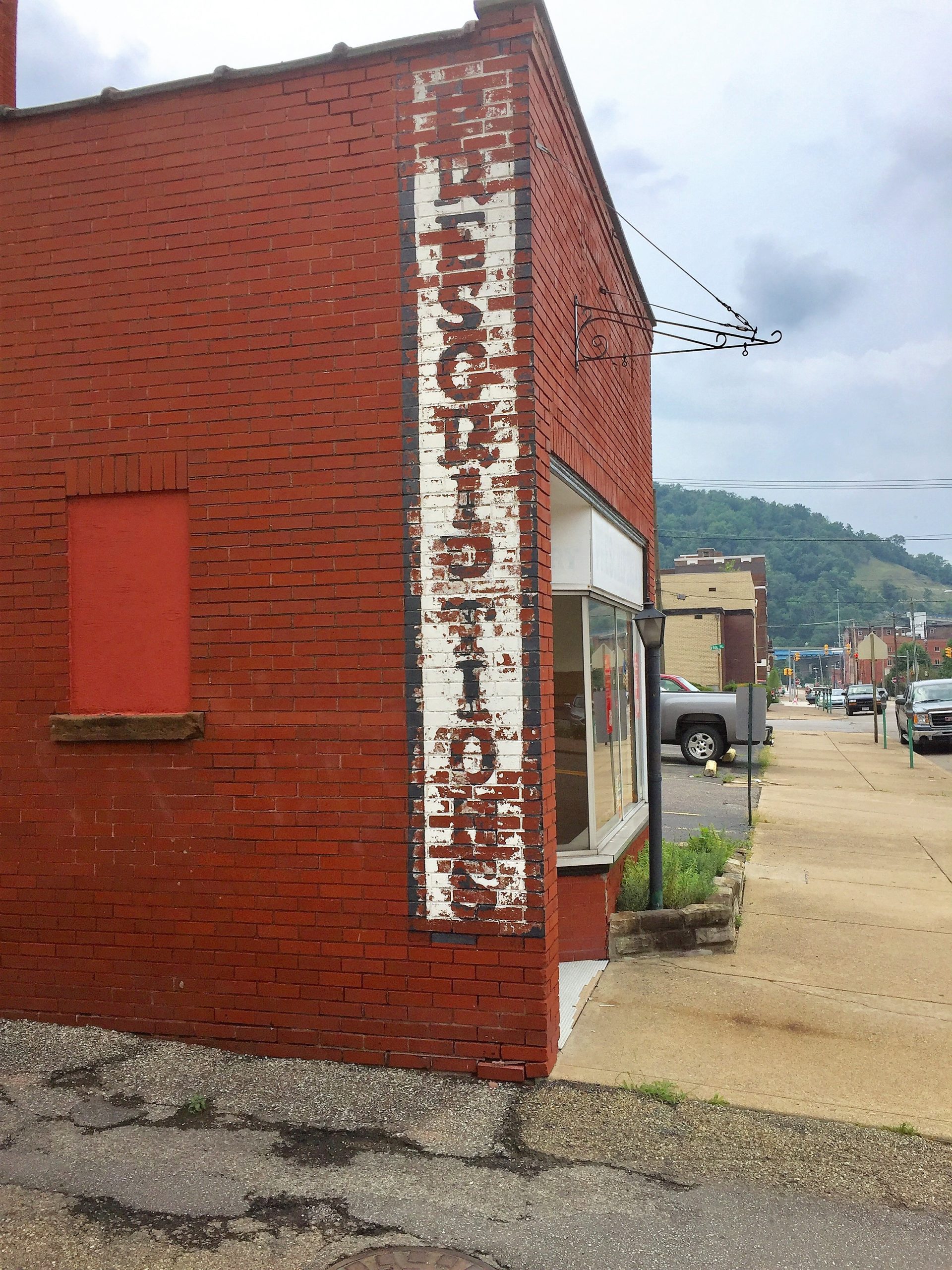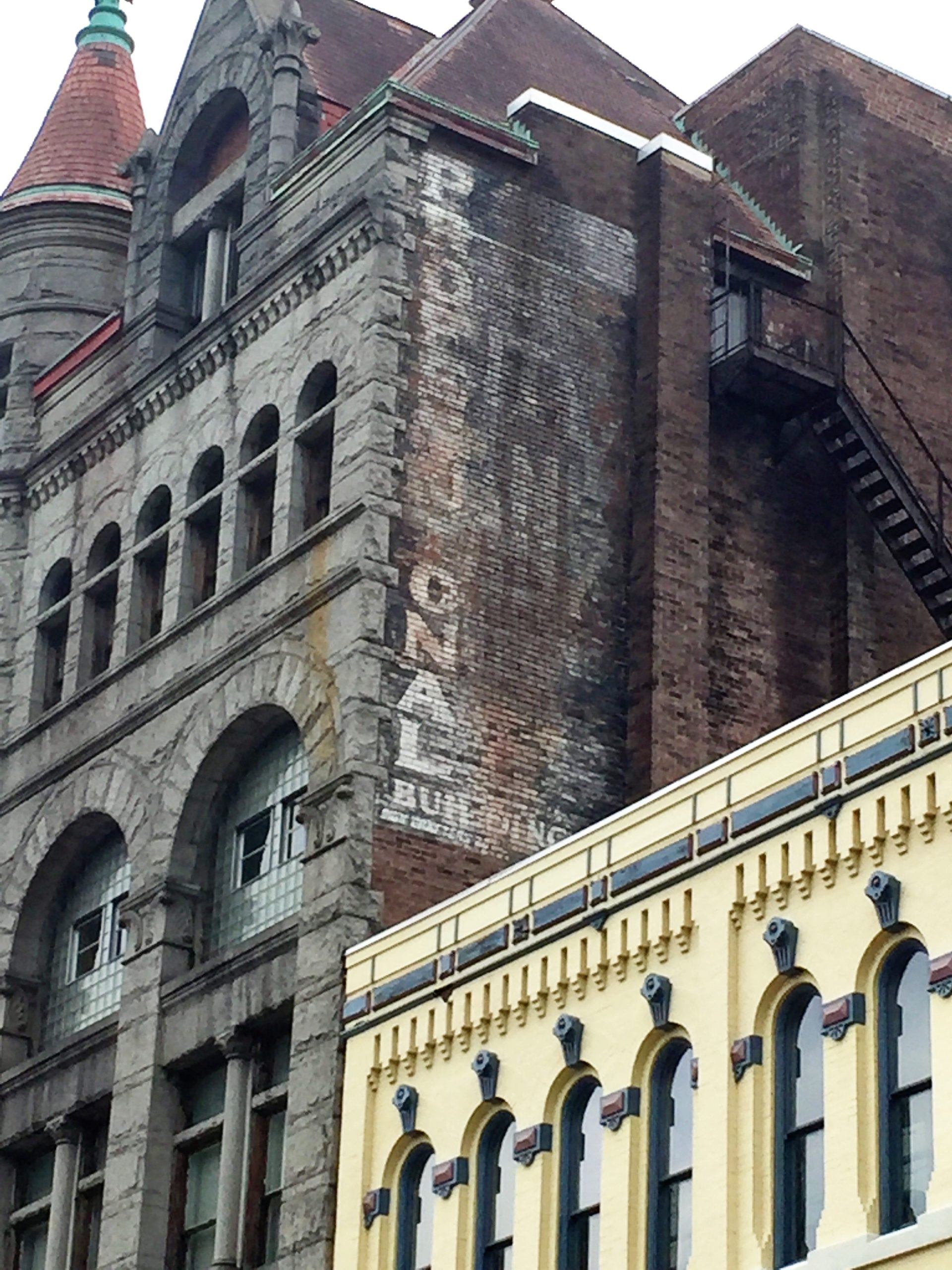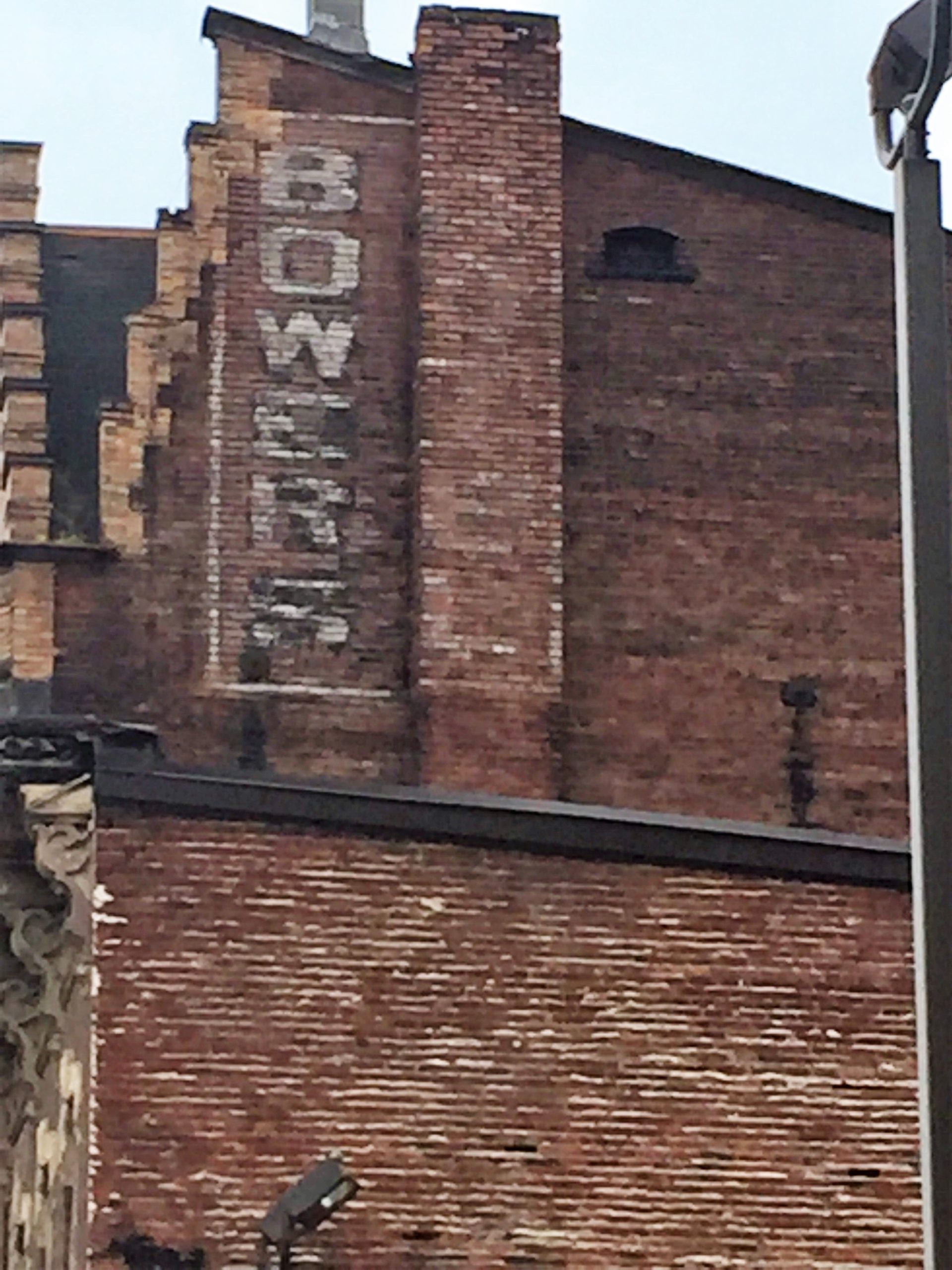At Weelunk, we’re all about keeping you connected to your community. Because that looks a little different right now, we’re bringing you ways to engage while staying safe and healthy. We hope Weelunk can continue to connect you to Wheeling — no matter where you are.
Most of us have never heard of ghost signs.
We notice them, but we don’t pay enough attention to really see them.
They linger on the sides of buildings throughout Wheeling, and, for that matter, all around the Ohio Valley. They are seen across America, and across the oceans in foreign lands.
Ghost signs are those old, hand-painted signs on the sides of buildings that predate billboards and television advertising. Their luster may have faded into their brick canvas, but the messages remain as clues about a city’s vibrant past. The signs’ longevity can likely be attributed to lead-based paint used to ensure its adherence to the bricks and sealing out the elements.
Wheeling history buff Jay Frey holds a fondness for the aging signs.
“They still exist and are legible, but are a shadow of their former self,” he said. “Hence, they are ghosts.”
A continuing reminder of these signs remains visible high on the south side of the former Cooey-Bentz furniture store in the 3600 block of Jacob Street. The store, once the queen bee in a South Wheeling hive of cultural and business diversity, may be best remembered as the home of the real Santa Claus.
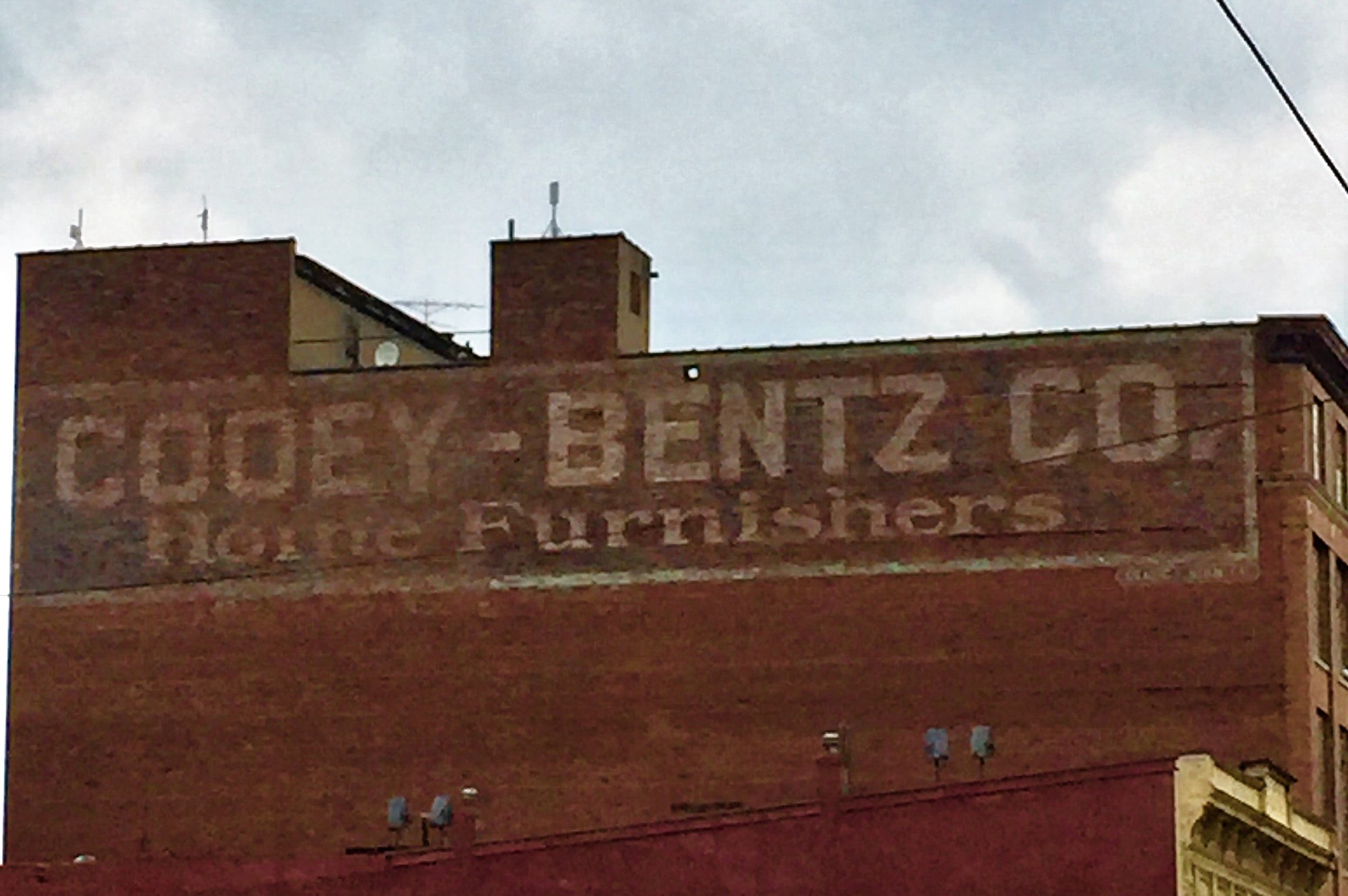
Jeff Knierim served as president and general manager of his family’s furniture business until it closed in 2002. He remembers back into the 1980s when the late Clarence Carney of C and C Painting set up his scaffolds and painted the first sign on the building.
“He came around from time to time and asked to freshen up the sign,” Knierim said. “Another sign painter from that era was Ed Hoge. He owned a company called Hoge and Sons Painting.”
Another South Wheeling business, Bloch Brothers Tobacco, also saw value in painting up their buildings. And more than 20,000 iconic Mail Pouch Barnes spotted the landscape across 22 states between the late 1800s and early 1910s. Belmont County’s own Harley Warrick painted thousands of them. Many have fallen with time, but more than a few still sport vanishing ghost signs.

Downtown Wheeling has many ghost signs still visible.
Signage on the Central Union Building offers “Office Rooms and Suites for rent, 24-hour telephone answering, and (not legible).”
The McClure Hotel offered popular prices and a sprinkler system, while the Rogers Hotel touted being fireproof.
A drive through downtown Wheeling reveals ghost signs on Wheeling Office Supply, an abandoned dry cleaner on 16th Street, McGee Office Supply near 14th and Market streets, National Equipment at 14th and Main and several others.
Wheeling Artist Bob Villamagna claims to be no expert, but he enjoys finding ghost signs.
“Often, when a building is torn down, another ghost sign gets exposed on the side of an adjoining building,” he said. “They have always been of interest to me. I’ve taken a lot of photos.”
In what may be another lost profession, the guys who painted the signs were called Wall Dogs, according to Villamagna.
There is an old adage “if only that (blank) could talk, it would tell some stories.” Ghost signs do not talk, but they say plenty of another time.
• Fred Connors is a retired investigative, criminal courts and police reporter for the Wheeling newspapers. He holds multiple West Virginia Press Association awards, as well as one from the Southern Newspaper Publishers’ Association. Fred lives in Wheeling with his new bride, Sharon Kennedy Connors.


